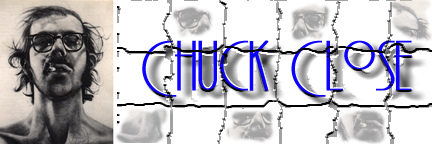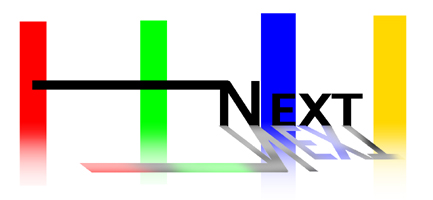
'It's clever, but is it art?'
-Rudyard Kipling
Chuck Close was born in Monroe, Washington in 1940, the child of a carpenter
and a piano teacher. From a young age, Close's artistic aspirations manifrested
themselves, but in school Close was not particularly successful, due at
least in part to dyslexia. He was particularly forced to develop new methods
of studying, such as shining a light on a small portion of the text in order
to keep his eyes focused on it. He learned in small segments this way, similar
to the method he used in his paintings in the future (The Horn Book, Biography).
As a junior college student, Close was selected to attend the Yale Summer
School of Music and Art. After receiving his B.A. from the University of
Washington, Close returned to Yale to receive his MFA fromthe School of
Art. Close received a Fulbright Scholarship to study in Vienna after which
he spent a brief period of time at the University of Massachusetts, where
he med his wife Leslie Rose.
In the late sixties, Close and his wife moved to New York City to pursue
his artistic interests. In 1967 he was given his first one-person exhibit
and throughout the seventies, Close continued develop and refine his technique.
The first retrospective of his work was exhibited at the Whitney Museum
of American Art in New York in 1981. He has taught at universities and been
the recipient of numerous awards and grants. His work can be found in art
musems across the country.
In December 1988, a congenitally weakened bolld vessel in Close's spine
collapsed, leaving him paralyzed from the neck down. After extensive physical
therapy, Close has regained a limited amount of control over his arms, though
not over his hands. he has been able tocontinue painting with the assistance
of a specially designed hand brace and a motorized easel.

